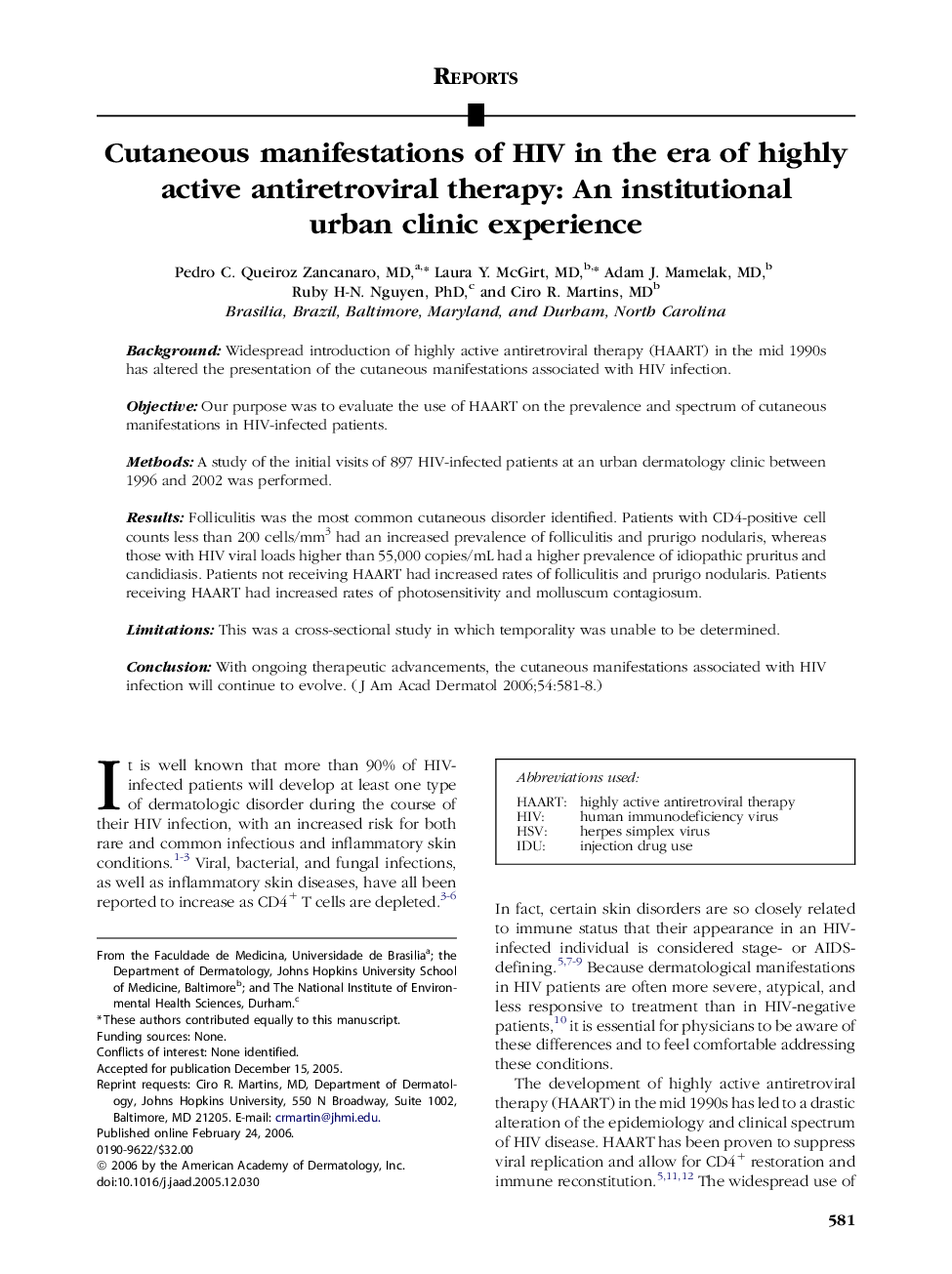| Article ID | Journal | Published Year | Pages | File Type |
|---|---|---|---|---|
| 3212006 | Journal of the American Academy of Dermatology | 2006 | 8 Pages |
BackgroundWidespread introduction of highly active antiretroviral therapy (HAART) in the mid 1990s has altered the presentation of the cutaneous manifestations associated with HIV infection.ObjectiveOur purpose was to evaluate the use of HAART on the prevalence and spectrum of cutaneous manifestations in HIV-infected patients.MethodsA study of the initial visits of 897 HIV-infected patients at an urban dermatology clinic between 1996 and 2002 was performed.ResultsFolliculitis was the most common cutaneous disorder identified. Patients with CD4-positive cell counts less than 200 cells/mm3 had an increased prevalence of folliculitis and prurigo nodularis, whereas those with HIV viral loads higher than 55,000 copies/mL had a higher prevalence of idiopathic pruritus and candidiasis. Patients not receiving HAART had increased rates of folliculitis and prurigo nodularis. Patients receiving HAART had increased rates of photosensitivity and molluscum contagiosum.LimitationsThis was a cross-sectional study in which temporality was unable to be determined.ConclusionWith ongoing therapeutic advancements, the cutaneous manifestations associated with HIV infection will continue to evolve.
